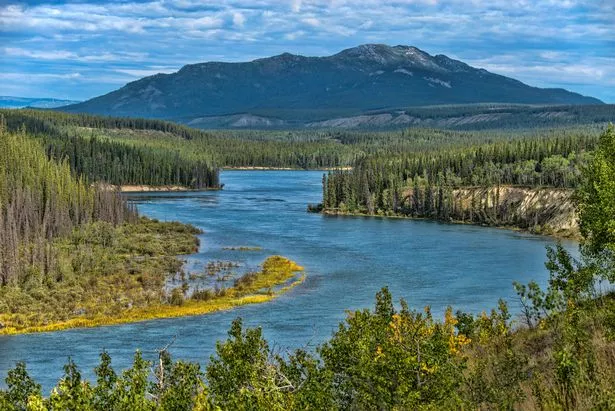Context:
According to a recently conducted study, there is a potential “mercury bomb” hidden beneath the melting permafrost in the Arctic.
More on the News:
- Researchers from the University of Southern California studied the transport of sediment in the Yukon River in Alaska and found that as the river flows west across the state, eroding permafrost along its banks is adding mercury-laden sediment to the water.
- Scientists have discovered that the melting permafrost in the Arctic is releasing toxic mercury into the water system, which could have severe consequences for the food chain and the communities that rely on it.
Yukon River
The Yukon River is a major watercourse of northwestern North America. It flows through the Canadian territory of Yukon and the U.S. state of Alaska, eventually emptying into the Bering Sea.
Key features:
- Length: 3,190 kilometers (1,980 miles)
- Source: Atlin Lake, British Columbia
- Cities: Whitehorse, Tanana, Nulato, Emmonak, Galena
- Basin size: 833,232 km² (321,713 sq mi)
The Urgency of Action

- Scientists estimate that the amount of mercury stored in the Arctic is roughly three times the global anthropogenic emissions of this pollutant.
- If this mercury is released into the environment, it could have devastating consequences for ecosystems and human health for generations to come.
The Consequences of Mercury Release
- Mercury can bioaccumulate in food chains, meaning that organisms higher up the food chain, such as fish and marine mammals, can accumulate high levels of this toxin.
- This can lead to serious health problems, including neurological disorders, reproductive issues, and impaired immune systems.
- Additionally, mercury can contaminate drinking water sources, posing a direct threat to human health.
Mitigation Strategies for Mercury:
- Reducing greenhouse gas emissions: By curbing our reliance on fossil fuels and transitioning to renewable energy sources, we can slow down the rate of climate change and reduce the melting of permafrost.
- Developing monitoring systems: Implementing robust monitoring systems can help us track the release of mercury from thawing permafrost and assess the potential risks.
- Promoting sustainable practices: Encouraging sustainable practices in the Arctic region, such as reducing pollution and minimizing disturbances to ecosystems, can help mitigate the impacts of mercury release.

